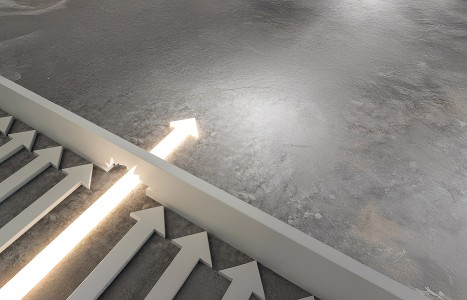You became a chiropractor to serve people, not an insurance company. You deserve to run a business that aligns with your values, supports your family and lights you up. Cash-based care isn’t just a pricing model – it’s a philosophy rooted in freedom, trust and respect for your patients and for yourself. Here's why - and how - to do it.
Supporting the Kinetic Chain
Ideal cervical spine posture when standing requires the coordination of skeletal structure, soft-tissue integrity, and neurological control to resist adverse gravitational loading forces. An often-overlooked factor of these requirements is the role that pedal stability can play in the maintenance of proper posture.1 Faulty foot biomechanics can have a negative impact on all supporting joints above the foot/ankle complex. For best results, the chiropractor seeking to treat a postural deviation needs to evaluate the potential involvement of the pedal foundation and correct postural foot problems.
The Extended Chain of Movement
During walking and running, the spine is one link in a biomechanical kinetic chain; movement at one joint influences movement at other joints.2 The chain extends from the feet through the ankle, tibia, knee, femur, hip joint, pelvis, and spine. The kinetic chain depends upon the balance of body alignment and muscle restraining activity at each joint against gravitational pull. Passive stability is achieved when the center of gravity of each segment is aligned directly over the center of the supporting joint. When the body is erect and weight is evenly distributed between the feet, there are minimal demands for muscle action, because there is no forward motion.
While stability of the kinetic chain should, in theory, be realized without any muscle action at all, the fact that none of the supporting joints (pelvis downward through feet) are locked means that the slightest sway (the beating of the heart, for example) can create an unstable alignment.3 Therefore, postural balance means a continuous involvement of the supporting skeletal structure and muscles.
Foundation Deficits
In ideal standing posture, the feet evert to form an angle of 30 degrees, and a plumb line dropped from the sacral promontory falls midway between the feet onto a line between the navicular bones. Pronation occurs when the superior aspect of the calcaneus tilts and rolls inward, bringing the talus with it. This releases the navicular from arthrodial articulation with the talus and jeopardizes the medial longitudinal arch. When collapsed, it can begin serial distortion that may extend to the occiput.
Common Postural Distortions
Lack of stability in the pedal foundation can lead to serial distortions and muscular stretching all the way up the spine:
Pedal conditions. Excessive pronation causes an abnormal instability in weight-bearing mode, creating hypermobility in the foot joints and leading to microtrauma in the soft tissues. Over time, even with only normal foot use, symptomatic conditions may develop, such as arch strain and fatigue, plantar fascitis, heel spurs, bunions, or metatarsal stress fractures.
Lower extremity distortions. Once the pedal foundation has been compromised, the effects of this instability will be manifested farther up the leg as conditions such as shin splints, posterior tibial myositis or Achilles tendinitis. The knees in particular provide a telltale signal of postural distortions. In normal posture, each patella should point directly ahead and be centered evenly over the foot and ankle. With postural compromise, an inward rotation of one or both kneecaps can often be detected visually. The tibia will also be internally rotated relative to the foot and externally rotated in relation to the femur.
Depending on the amount of pronation, the movement extends farther to the femur, bringing the greater trochanter forward and out. The piriformis muscle at the apex of the trochanter is then subjected to a windlass-type stretch. Due to its connection with second, third and fourth sacral segments, the sacrum at its articulation with the ilium on the involved side may be pulled into a subluxated anterior and inferior position.
When this occurs, the gluteus maximus muscle compensates by contracting to resist the downward and forward disposition of the pelvis. At its origin on the posterior third of the iliac crest, the gluteus maximus contraction may force the ilia portion of the innominate to rotate posteriorly. Thus begins a typical basic distortion.
Spinal distortions. As each subsequent part of the body's chain is affected, additional postural conditions may develop, setting off a reaction similar to dominoes falling. As the base point of the body's center of gravity shifts forward, the pelvis begins to translate, which produces a thoracic extension. The head attempts to maintain its position over the vertical center of gravity, and therefore slides into anterior translation.
In anterior translation, the ear is forward of the AC joint and the bite line is level, creating the so-called "dowager's hump." In addition, the evaluating doctor will also note an increased cervical lordosis, round shoulders, internally rotated humerus, and kyphotic posture. These deviations have been identified as "mainly a result of the integrity of the abdominal wall and hip joints."4
With reduced stabilization efficiency, the body must work harder to maintain a standing posture. Cailliet concluded that, for every inch of anterior translation, there is a 10-fold increase in muscular effort on the part of the cervical spine's supporting muscles. This inefficiency results in a constant firing of these muscles.5
Functional scoliosis is another relatively common condition that can result from overpronation. Internal femoral rotation causes forward pelvic tilt, leading to external subluxation. The resulting limitation of hip rotation and compensatory subluxations can cause scoliotic curvatures.
Effects of pronation are also evident in adjacent tissues. The increased anterior pelvic tilt elevates the postero-inferior portion of the pelvis, resulting in abnormal stretching and tension on the hamstring musculature. Tension on the piriformis muscle increases, often giving rise to sciatic pain.
Corrective Orthotic Support
The kinetic chain plays a key role in understanding the biomechanics of a patient's postural condition. Structural imbalance in the feet can impact on other body parts, all the way up through the spine. The use of orthotics is frequently indicated to restore balance and provide a level pedal foundation. Orthotics are of special value in cases in which foot pronation and arch ligament laxity have been observed. Flexible, custom-made orthotics address excessive pronation and provide support for the collapsed structures in the feet, creating a sturdy base for the rest of the biomechanical kinetic chain.
References
- Mattacola CG, Dwyer MK, Miller AK et al. Effect of orthoses on postural stability in asymptomatic subjects with rearfoot malalignment during a 6-week acclimation period. Arch Phys Med Rehabil, 2007;88(5):653-660.
- Steindler A. Kinesiology of the Human Body Under Normal and Pathological Conditions, 3rd Edition. Springfield, IL: Charles C. Thomas, 1970.
- Perry, J. Gait Analysis: Normal and Pathological Function. Thorofare, NJ: SLACK, Inc., 1992.
- Porterfield JA, DeRosa C. Mechanical Neck Pain: Perspectives in Functional Anatomy. Philadelphia: W.B. Saunders Co., 1995.
- Cailliet R. Neck and Arm Pain. Philadelphia: F.A. Davis, 1981.


